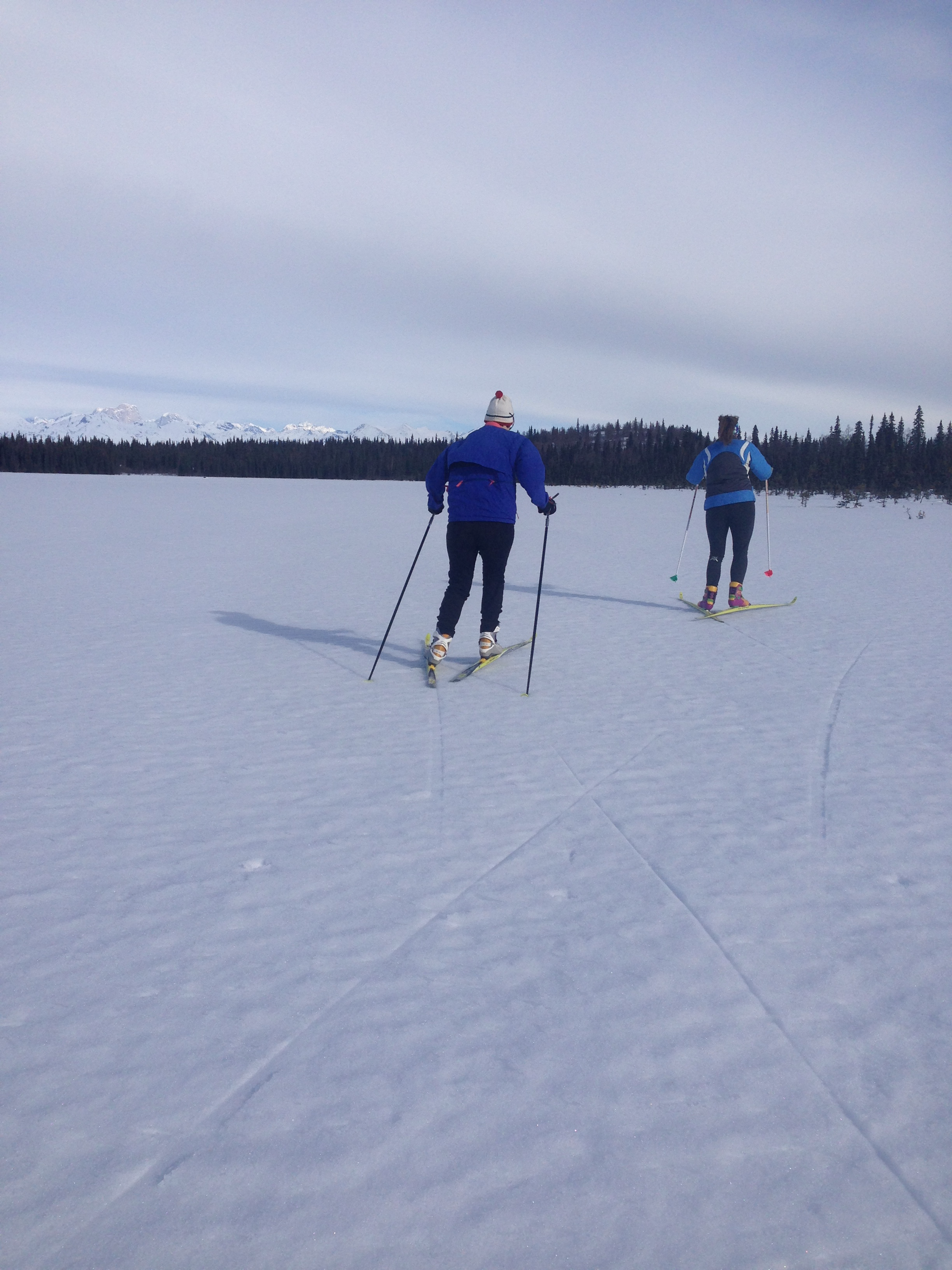
08 Apr Are you getting Crusty?
Read on for TIPS from GNSC:
Crust skiing/biking allows you to explore meadows and other spaces usually not accessed by skate skis or bike.
The key weather ingredients are
1) warm daytime temperatures to create a bit of melting,
2) followed at night by temperatures below freezing to
3) make the slushy surface freeze and form a crust.
While an inch of new snow is fine, any more than that prevents a crusty surface. Crust skiing offers amazing freedom because a skier can go pretty much anywhere, and usually more speedily since the snow’s surface provides a smooth and fast base.
Tips for crust skiing/biking:
- Crust skiing tends to favor skate skis over classic skis as the refrozen surface layer of snow doesn’t offer much grip for classic skiing.
- Studded tires recommended for crust riding since the snow has been refreezing.
- Watch the weather for freezing temps at night. Clear skies tend to allow for freezing of the surface layer of snow. The CNFAIC has a excellent weather page.
- Different areas of elevation will change the crust conditions. IE Turnagain pass meadows vs Girdwood meadows. Watch the temp differences in these areas. NOAA
- Head out early. The idea of crust skiing/biking is to use the supportable refrozen layer to ski/bike upon. Ideally this surface will be just edgable enough to give a skate ski or tire purchase without breaking through.
The goal of of crust skiing/biking is to stay on top of the snow and use that surface before it softens and becomes unsupportable. Usually crust skiing favorites near Girdwood are Portage Lake, Skookam Glacier, Placer River Valley, Turnagain Pass, Twenty Mile Valley, and of course, the meadows in Girdwood.
There is a Facebook group called Crust Ski Alaska that is a great resource for the latest crust and ski reports around Alaska.
Some experimenting is usually required with getting the hang of forecasting the weather. It’s natural to misread the weather/snow conditions as one tries out crust ski/biking at first. Hang in there, the reward is usually worth it. Just remember to get back to firmer ground before you start to break through into the deeper snow.
Only wagons like ruts, and fences like post holes.

